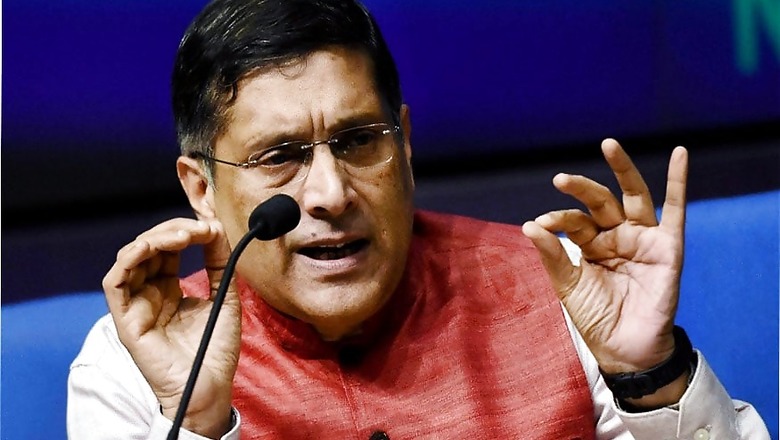
views
New Delhi: Chief Economic Adviser Arvind Subramanian has said that removing the highest 28 percent slab and a uniform cess rate could be the first steps to simplifying the Goods and Services Tax (GST).
“I think the 28 per cent rate has to go. The cesses may have to remain, but there should be just one rate on cesses… Today, we have GST rates of zero, 3 per cent (for gold), 5 percent, 12 percent, 18 percent and 28 percent. We need to rationalise but I think at the first instance the 28 percent should go,” Subramanian said at the Idea Exchange programme of The Indian Express.
Asked if cesses should be removed, he said, “I am saying that in an ideal system the 28 per cent rate has to go. The cesses may have to be there because we are going to have higher rates for some products but there shouldn’t be multiple rates even here. In my report, we had called for one 18 per cent rate and then 40 per cent rate. Cesses are a different way of implementing the 40 per cent rate.”
Citing “personal reasons” Subramanian last week had said that he would be leaving the Finance Ministry soon though he had not yet finalised the date of his last day in office. His announcement came 11 months before the end of his term in May 2019.
Speaking about the challenges the economy faces, he said that other than rising crude oil prices “stigmatised capitalism” is coming in the way of reforms.
“In terms of broader challenges that we have, stigmatised capitalism is coming in the way of a lot of reforms. The fact that it is getting very difficult to make decisions that involve bringing in the private sector… In this “mahaul” of the stigmatised capitalism, public sector officials are finding it difficult to take decisions because of the fear that, at some point, it will be questioned or investigated,” he said.
The CEA also said that this would complicate a lot of things — privatisation, subsidy reforms and the whole twin balance sheet problem. He, however, said, “The IBC has partially broken the back of stigmatised capitalism. We have finally found the way to the exit, but the truth is that more and more exit decisions like this will only be possible via a judicial approach rather than a pure political and administrative approach.”
Presently, the GST regime has multiple tax slabs with five broad categories of zero, 5 percent, 12 percent, 18 percent and 28 percent. There are two more GST rates of 0.25 percent for rough diamonds, precious stones and 3 percent for gold, silver.
A cess, ranging from 1 to 15 percent, is levied on demerit and luxury goods over and above the highest rate of 28 percent. The proceeds from the cess are intended to compensate state governments in the first five years of the GST regime for potential revenue losses after factoring in the projected revenue growth rate of 14 percent with 2015-16 as the base year.
Subramanian had headed a committee and submitted the report on the “Revenue Neutral Rate and Structure of Rates for the GST”. In his report, he had suggested a preferred revenue neutral rate of 15 percent, with two, four, and six per cent rate for precious metals, a low rate of 12 percent for goods along with a standard rate of 16.9, 17.3 and 17.7 percent and one 40 percent rate for demerit goods.




















Comments
0 comment